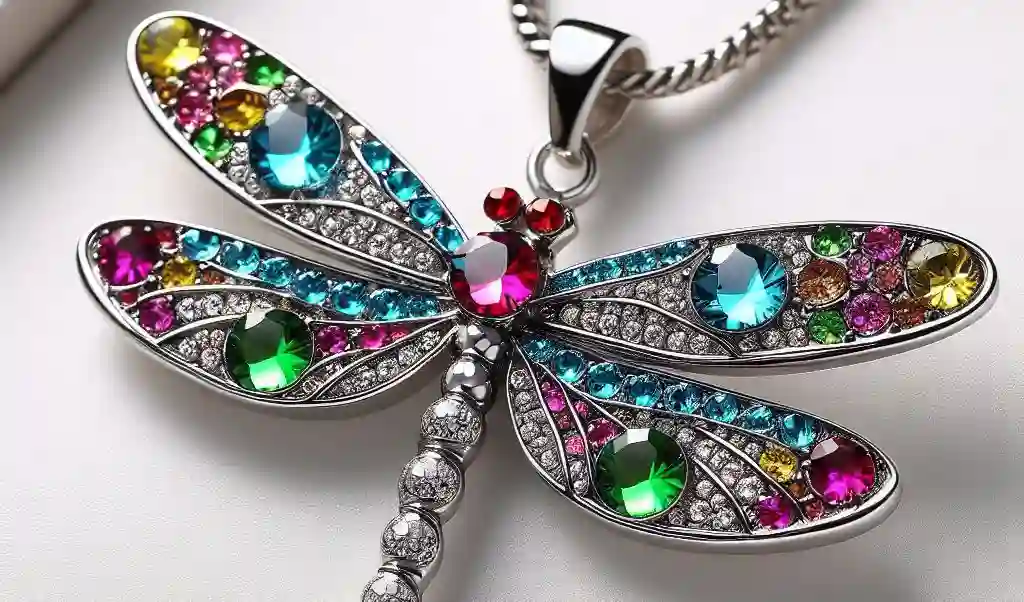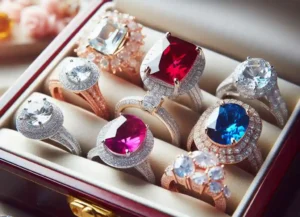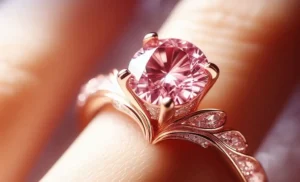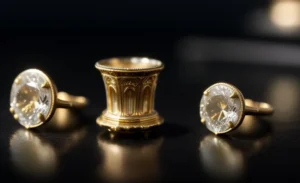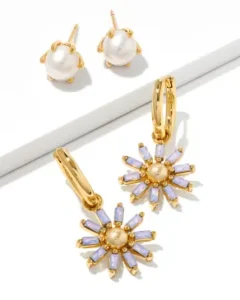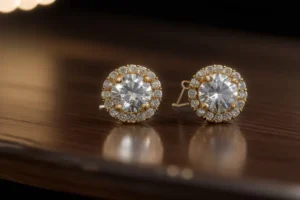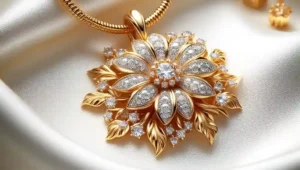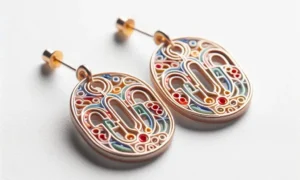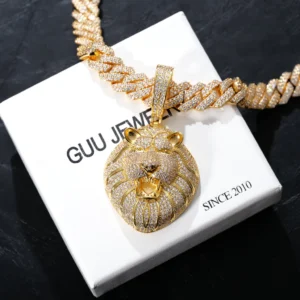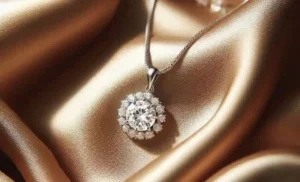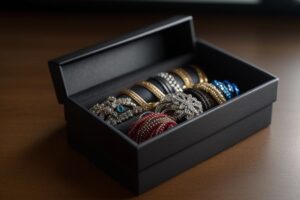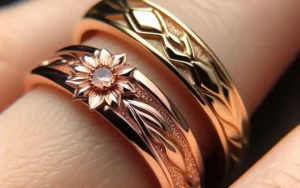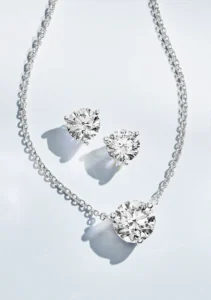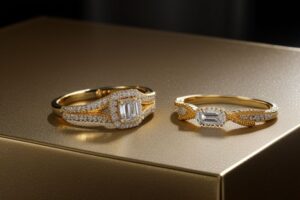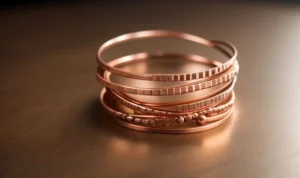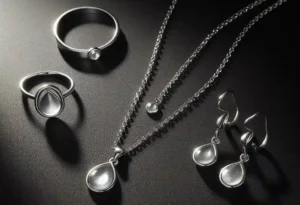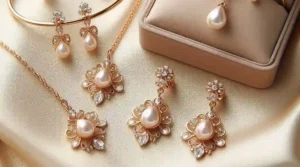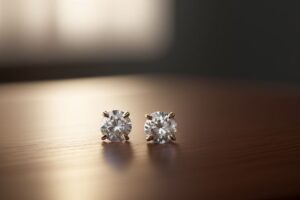Is Zinc Alloy Hypoallergenic? In the world of jewelry and accessories, the term “hypoallergenic” has become a beacon for those with sensitive skin.
Among the myriad of materials touted for their supposed skin-friendly properties, zinc alloy often finds itself at the center of a heated debate. Can this common, versatile metal truly be considered safe for all?
This blog post delves into the hypoallergenic debate surrounding zinc alloy, aiming to unveil the truth about its composition, its interaction with sensitive skin, and whether it can be a safe choice for everyone.
Is Zinc Alloy Hypoallergenic?
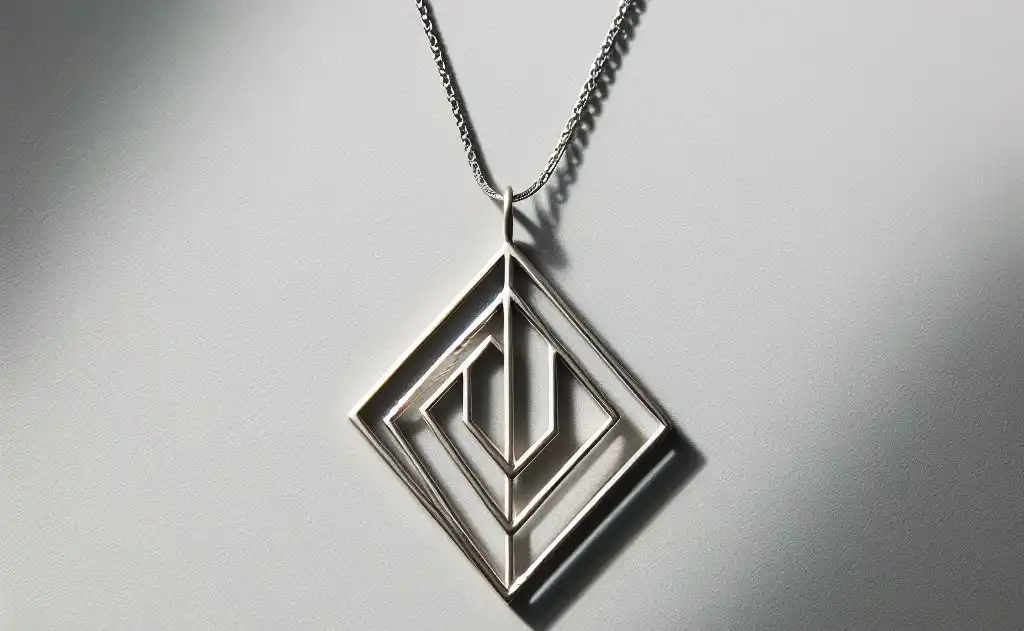
Zinc alloy can be hypoallergenic, depending on its composition. Zinc itself is a metal that typically does not irritate the skin, making it a potential option for those with sensitive skin. However, the hypoallergenic status of zinc alloy jewelry hinges on the other metals mixed with zinc.
Specifically, the inclusion of nickel, a common allergen, can render a zinc alloy piece problematic for individuals with nickel sensitivities or allergies. Therefore, the hypoallergenic nature of a zinc alloy item is not inherent to the alloy but is determined by the absence of nickel and other allergenic metals in its composition.
To ensure a piece of zinc alloy jewelry is hypoallergenic, consumers should seek out items that are explicitly labeled as “nickel-free” or inquire about the specific metals used in the alloy.
This careful selection process allows individuals with sensitive skin to enjoy zinc alloy jewelry without the worry of allergic reactions, provided the alloy has been formulated with their needs in mind.
Understanding Hypoallergenic Materials
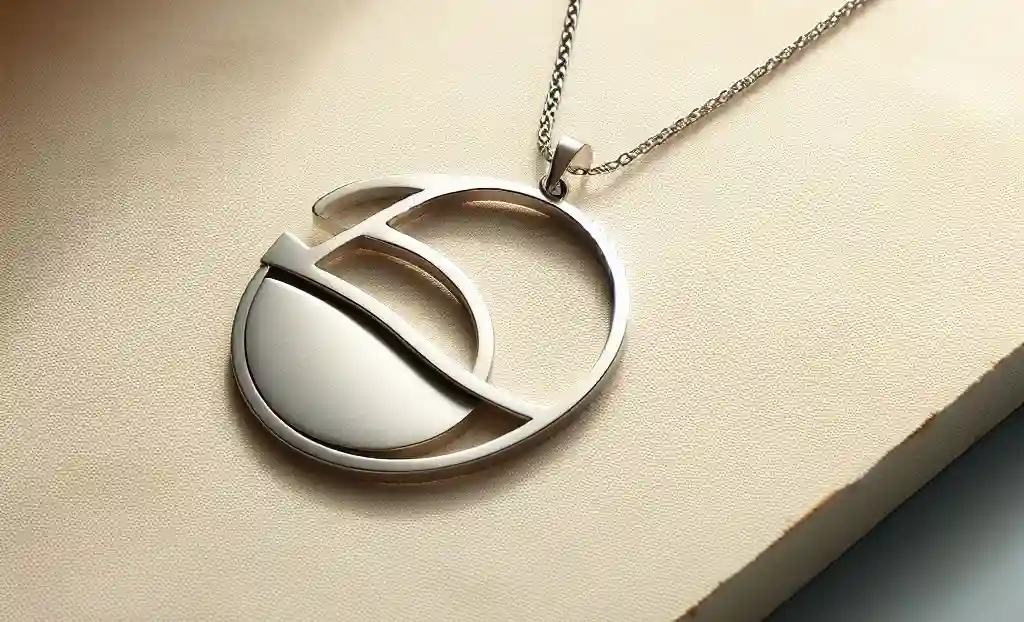
Materials deemed hypoallergenic are designed to significantly reduce the risk of triggering allergic reactions. In the context of metals, this often translates to being devoid of nickel, a notorious catalyst for contact dermatitis.
However, labeling a material as hypoallergenic does not equate to it being entirely free from allergenic potential. The term is relative, highlighting a material’s diminished likelihood to cause an allergic response rather than an absolute guarantee of safety.
This nuanced understanding is vital for individuals with sensitive skin, as it underscores that reactions can still occur, albeit less frequently, depending on one’s specific sensitivities and the composition of the alloy in question.
Recognizing the difference between hypoallergenic and non-allergenic is crucial in navigating the selection of skin-friendly materials, emphasizing the importance of knowing a material’s composition and one’s own skin’s tolerance levels.
Zinc Alloy Composition: What’s Inside?
Zinc alloy serves as a popular choice in the jewelry industry due to its adaptability and cost-effectiveness. At its core, zinc is combined with other metals to create an alloy that boasts improved strength and versatility compared to pure zinc.
Commonly, metals like copper, aluminum, and magnesium are incorporated to achieve desired physical properties such as hardness, ductility, and corrosion resistance. Each addition plays a role in enhancing the alloy’s appeal for various applications, including jewelry making.
For instance, copper is often added to increase malleability, making the alloy easier to mold into intricate designs, while aluminum can enhance durability. The variability in zinc alloy compositions allows for a range of characteristics, tailored to specific needs.
However, it is the presence or absence of certain metals, notably nickel, that directly impacts the hypoallergenic potential of the alloy. As consumers become more informed, the demand for specific compositions that cater to sensitive skin increases, prompting manufacturers to adjust their formulas accordingly.
The Role of Nickel in Allergic Reactions
Nickel stands as one of the most common culprits behind contact dermatitis, a condition marked by itchy, inflamed skin following exposure. This metal’s ability to induce allergic reactions has been well-documented, with symptoms ranging from redness and itching to more severe skin conditions.
In the context of zinc alloy jewelry, the risk of dermatitis increases significantly when nickel is a component of the alloy. The interaction between nickel and the skin, especially with prolonged or repeated exposure, can exacerbate sensitivity, leading to discomfort and potential skin damage.
The body’s immune response to nickel, recognizing it as a foreign substance, triggers allergic reactions, making the presence of nickel in zinc alloys a primary concern for those with sensitive skin or known allergies to this metal.
Understanding nickel’s role in allergic reactions is crucial for consumers seeking to navigate their choices in jewelry and avoid potential triggers.
Identifying Hypoallergenic Zinc Alloys
To pinpoint hypoallergenic zinc alloys, it’s essential to focus on pieces specifically crafted without nickel. Manufacturers aware of the sensitivity concerns increasingly offer “nickel-free” or “hypoallergenic” options within their jewelry lines.
When shopping, these labels are your go-to indicators for safer choices. However, it’s important to note that not all products may be accurately labeled due to the industry’s varying standards.
In cases where the hypoallergenic status of jewelry is unclear, reaching out directly to manufacturers for a breakdown of the alloy’s composition can be enlightening. This proactive approach ensures you are better informed about what you are introducing to your skin, helping to mitigate the risk of allergic reactions.
Always remember, the key to finding genuinely hypoallergenic zinc alloy jewelry lies in diligent research and communication with brands about their metal sourcing and manufacturing processes.
The Importance of Transparency in Jewelry Labeling
For individuals navigating the complexities of sensitive skin, the clarity and accuracy of jewelry labels become an indispensable guide in selecting safe, wearable pieces.
The lack of standardized practices in the jewelry industry for disclosing material compositions leaves many consumers at a disadvantage, struggling to avoid triggers for allergic reactions.
This gap in information underscores the urgent need for robust labeling standards that can bridge the divide between manufacturers and consumers.
Enhanced transparency not only empowers individuals to make informed choices but also places a responsibility on brands to be forthcoming about the materials used in their products.
As consumers become more vocal about their health and safety concerns, the push for detailed labeling could lead to a significant shift in how jewelry is marketed and perceived, prioritizing consumer well-being over aesthetic appeal or cost-efficiency.
Establishing clear, comprehensive labeling practices is a critical step toward fostering trust and ensuring that beauty does not come at the expense of health.
Practical Tips for Sensitive Skin
For individuals with sensitive skin, navigating the world of jewelry requires a bit of strategy to avoid allergic reactions. One effective approach is to prioritize pieces that are marked as “nickel-free” or bear a “hypoallergenic” designation, as these are less likely to provoke a skin response.
Before committing to a full day of wear, it’s wise to conduct a patch test—wear the jewelry for a brief period on a small section of skin to monitor for any adverse reactions. To further minimize contact with allergens, applying a thin layer of clear nail polish on areas of the jewelry that touch your skin can act as a protective barrier.
Regularly cleaning both your skin and the jewelry pieces also plays a crucial role in preventing irritation. Should you notice any signs of a reaction, promptly remove the jewelry and seek advice from a dermatologist to address the issue.
By adopting these practices, those with sensitive skin can better manage their exposure to potential irritants, ensuring a more comfortable and safe jewelry-wearing experience.
The Verdict: Is Zinc Alloy Hypoallergenic?
When evaluating zinc alloy’s hypoallergenic properties, the key factor to consider is its specific formulation. While the base metal, zinc, is typically non-irritating for most people, the addition of other metals, particularly nickel, influences its overall safety for sensitive skin.
Given the variability in alloy compositions, not all zinc alloy jewelry is created with the same sensitivity in mind. For those concerned about allergic reactions, it’s essential to identify and select zinc alloy pieces that explicitly exclude nickel and other potentially allergenic metals.
This selective approach allows individuals with sensitive skin or allergies to enjoy the beauty of zinc alloy jewelry without undue risk. Therefore, the hypoallergenic nature of zinc alloy is conditional, heavily dependent on the conscious exclusion of known allergens in its composition.
The Future of Hypoallergenic Jewelry
As the collective understanding and demands of consumers evolve, the trajectory for hypoallergenic jewelry is set towards greater inclusivity and innovation.
The growing emphasis on skin health and allergen-free products is pushing the industry to explore advanced materials and manufacturing processes that prioritize safety without compromising on style.
Emerging technologies in material science are already showing promise for creating alloys and protective coatings that are less likely to trigger allergic responses.
This progression aligns with a broader trend of personalization and health-conscious consumerism, reflecting a shift in priorities towards well-being and comfort in the accessories market.
With ongoing advocacy for transparency and the implementation of stricter labeling standards, the future holds a landscape where hypoallergenic options are not just an alternative but the norm, enabling everyone to adorn themselves without the fear of adverse reactions.
This forward momentum is indicative of a more inclusive approach, where the beauty of jewelry is accessible to all, showcasing a commitment to diversity in wearer experience and safety.
FAQs
Q: How can I tell if a piece of zinc alloy jewelry is hypoallergenic?
A: Look for pieces explicitly labeled as “nickel-free” or “hypoallergenic.” For additional assurance, you can contact the manufacturer to inquire about the specific metals used in the alloy.
Q: Can I develop an allergy to zinc alloy jewelry?
A: While zinc itself is generally non-irritating, allergies can develop over time due to other metals present in the alloy, such as nickel. If you notice signs of irritation, it’s advisable to stop wearing the piece and consult a dermatologist.
Q: Is it possible for “nickel-free” jewelry to still cause a reaction?
A: Yes, individuals may have sensitivities to metals other than nickel. Although less common, reactions to metals like copper or aluminum can occur. Conducting a patch test can help determine if a specific piece is safe for you.
Q: Are there any other precautions I can take to minimize allergic reactions?
A: Aside from choosing hypoallergenic or nickel-free jewelry, applying a barrier like clear nail polish to the parts of the jewelry that touch your skin can help. Regularly cleaning the jewelry and your skin where it makes contact can also reduce the risk of irritation.

